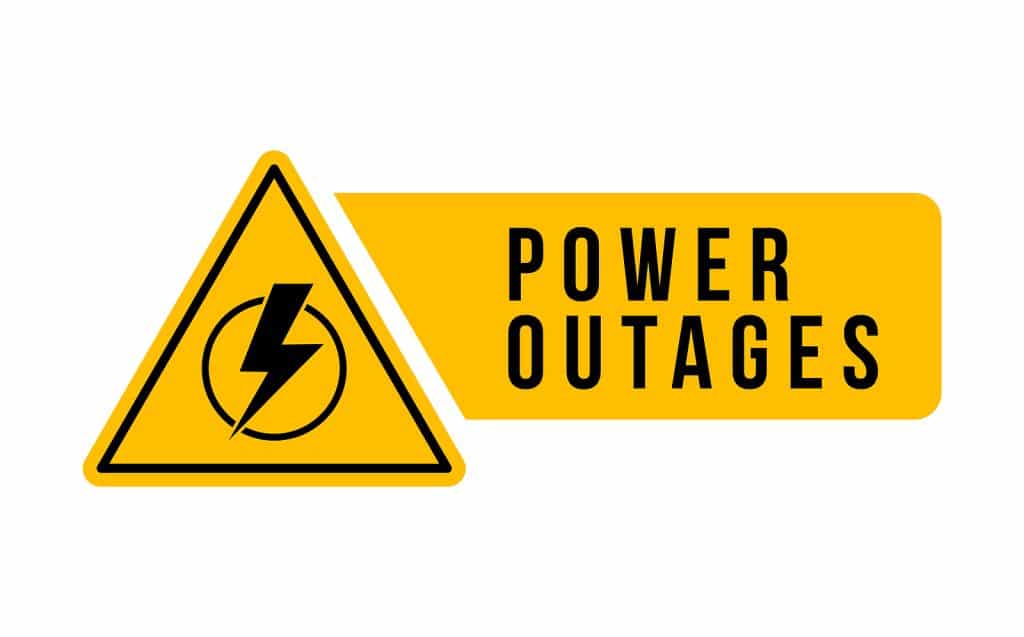Are you tired of experiencing power outages that disrupt your daily operations and cause
significant financial losses? Look no further, as an Outage Management System (OMS) is here to minimize your downtime and maximize your recovery.
Table of Contents
Power outages can significantly impact your business, affecting productivity, customer satisfaction, and revenue streams. However, with an OMS, you can proactively detect and respond to incidents, ensuring efficient restoration and minimal disruption. By leveraging advanced technologies, like real-time monitoring and predictive analytics, an OMS empowers you to identify potential issues before they escalate, enabling faster recovery times.

Furthermore, continuous monitoring and system optimization are critical components of an effective OMS. You can prevent future outages and enhance system reliability by constantly analyzing data and optimizing network performance.
In this article, we will delve into the technical intricacies of OMS and how it can revolutionize your outage management processes. Get ready to take control of your outage management processes and experience uninterrupted operations with the help of an OMS. Let us guide you through the world of OMS and its immense potential for minimizing downtime and maximizing recovery.
Understanding the Impact of Power Outages
Imagine being in the middle of your favorite TV shows when suddenly, the power goes out, leaving you in darkness and frustration. Power outages can be major inconveniences, disrupting daily activities and causing frustration. Understanding the impact of power outages is crucial to develop better strategies for minimizing downtime and maximizing recovery.
Power failures can occur due to various causes, ranging from severe weather conditions to equipment failure. Identifying the causes and implementing preventive measures can reduce the frequency and downtime of power outages.
The impact of power outages is not limited to individuals. Businesses heavily rely on a consistent power supply to operate smoothly. Power outages can lead to significant financial losses, disrupted operations, and damaged equipment. Similarly, communities are affected as essential services such as hospitals, schools, and transportation systems can be severely impacted.
Understanding the causes and prevention of power outages, as well as their impact on businesses and communities, is essential in developing an effective outage management system that minimizes downtime and maximizes recovery.

The Role of Outage Management Systems
Visualize how an outage management system streamlines processes and guides you through the steps to quickly resolve issues and get your operations back up and running smoothly. By reducing downtime and optimizing efficiency, outage management systems play a vital role in minimizing the impact of power outages. These systems provide real-time monitoring and analysis of power grids, allowing for proactive identification of potential issues and faster response times.
Through automated workflows and intelligent algorithms, outage management systems prioritize critical tasks, allocate resources effectively, and streamline stakeholder communication. By centralizing information and providing a holistic view of the outage, these systems enable operators to make informed decisions, implement targeted solutions, and minimize downtime.
Furthermore, outage management systems facilitate data analysis and reporting, allowing organizations to learn from past outages and continuously improve their response strategies. With their technical precision and analytical capabilities, these systems empower you to manage outages and optimize your operations efficiently.
Early Detection and Proactive Measures
Get ahead of potential issues and take proactive measures to keep your operations running smoothly with early detection tools and strategies. An outage management system (OMS) equipped with early warning capabilities can help you identify potential problems before they escalate, minimizing downtime and maximizing recovery. By monitoring key performance indicators and analyzing data in real-time, the OMS can detect anomalies and alert you to potential issues before they impact your operations. With this early warning system in place, you can proactively take preventive measures to address the underlying causes and prevent outages from occurring. This might include implementing maintenance schedules, upgrading equipment, or reinforcing infrastructure. By being proactive and addressing issues before they become major problems, you can minimize downtime and ensure the smooth functioning of your operations.
Efficient Incident Response and Restoration
Efficient incident response and speedy restoration are crucial for running your operations smoothly and minimizing disruptions. When an outage occurs, conducting a thorough incident analysis is essential to identify the root cause and determine the most effective course of action.
By analyzing the incident, you can gain valuable insights into the underlying issues and develop strategies to prevent similar incidents in the future. Additionally, a swift restoration process is vital in reducing downtime and minimizing the vast impact on your business. This involves deploying skilled technicians who can quickly diagnose and resolve the issue, leveraging real-time data and automated systems to expedite the restoration process. By efficiently managing incidents and rapidly restoring services, you can ensure minimal downtime and maximize your businesss productivity.
Utilizing Advanced Technologies for Faster Recovery
Embrace cutting-edge technologies to quickly bounce back from disruptions and ensure uninterrupted operations, allowing you to staying ahead of the competition and maintain customer satisfaction. Advanced technologies play a crucial role in faster recovery during outages. One such technology is predictive analytics, which can detect potential issues before they cause a complete system failure. By analyzing historical data and analytics, better predictive analytics can identify warning signs and initiate proactive measures to prevent downtime.
Additionally, leveraging artificial intelligence (AI) and machine learning (ML) algorithms can expedite recovery. These technologies can automatically analyze and diagnose the root cause of the outage, enabling technicians to focus on resolving the issue promptly. Furthermore, utilizing cloud-based solutions can provide quicker access to backup and recovery resources, reducing downtime and minimizing the impact on operations. By embracing advanced technologies, you can significantly enhance your outage management systems efficiency and reduce downtime, ensuring uninterrupted operations and customer satisfaction.

Continuous Monitoring and System Optimization
You can ensure seamless performance and maintain a competitive edge in the market by continually monitoring and optimizing your operations. Implementing real-time analytics allows you to gather and analyze data in real-time, providing valuable insights into the health and performance of your systems. This enables you to proactively identify potential issues before they escalate into major problems, minimizing downtime and maximizing productivity.
Additionally, predictive maintenance plays a crucial role in outage management by using advanced algorithms and machine learning to predict when equipment will likely fail. By analyzing historical data and patterns, you can schedule maintenance activities at the most reasonable times, reducing the risk of unexpected outages. This proactive approach saves time and resources, ensuring uninterrupted operations and enhancing customer satisfaction. Stay ahead by embracing continuous monitoring and system optimization with real-time analytics and predictive maintenance.
Conclusion
In conclusion, implementing an outage management system minimizes downtime and maximizes recovery in power outage situations. Organizations can significantly reduce the adverse effects of downtime by understanding the impact of power outages, utilizing early detection and proactive measures, and efficiently responding to incidents.
Furthermore, advanced technologies allow for faster recovery and continuous monitoring, ensuring optimal system performance. Organizations can effectively mitigate risks and enhance operational efficiency by optimizing outage management processes.
Read more – Popular Home Upgrades You Should Invest In








